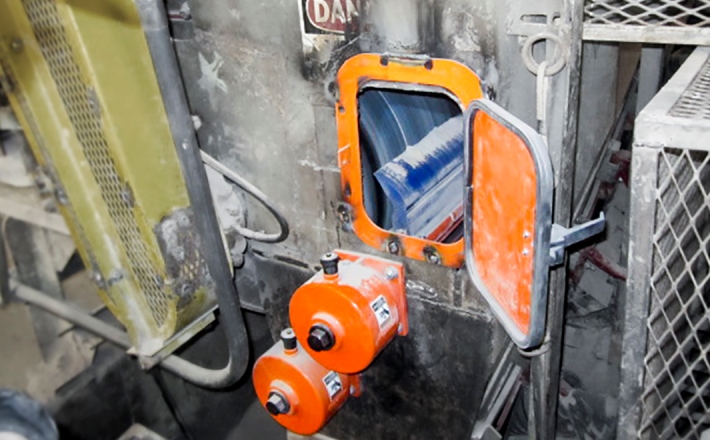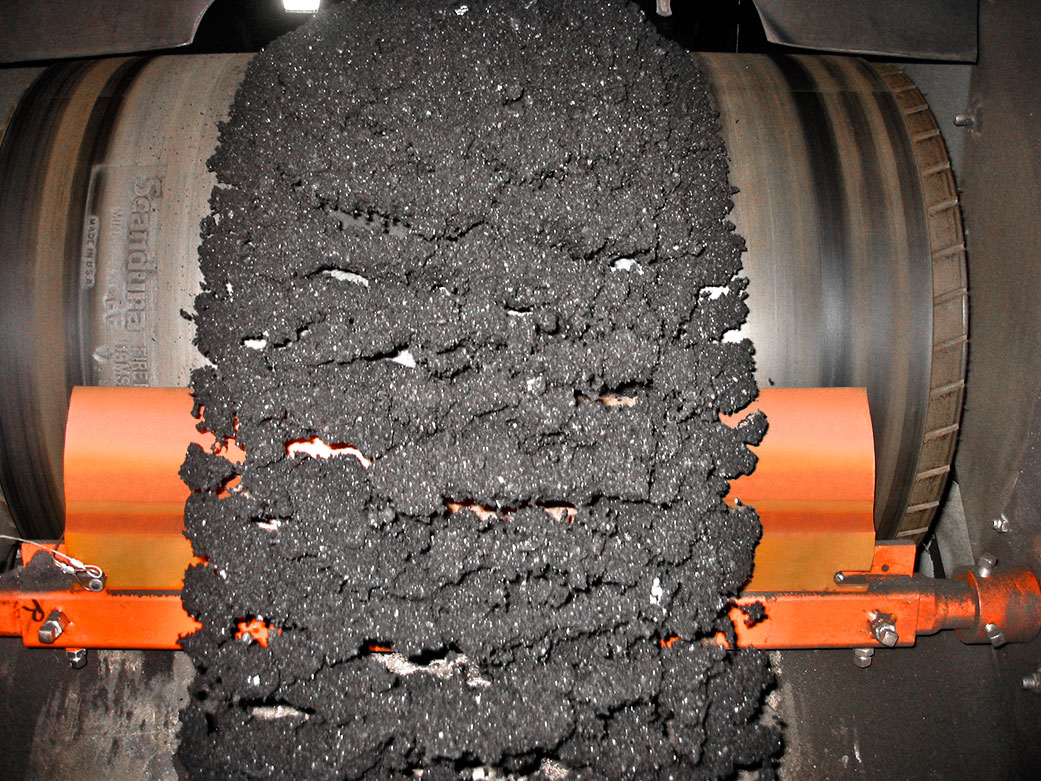Specifying Belt Coverage
Publicado: May 28th 2014
 Typically, the blades of a cleaner do not cover the full width of the belt, because the full width of the belt is not typically used to carry material. CEMA specifies the minimum blade coverage based on belt width.
Typically, the blades of a cleaner do not cover the full width of the belt, because the full width of the belt is not typically used to carry material. CEMA specifies the minimum blade coverage based on belt width.
Various belt cleaner manufacturers have their own standard or typical blade coverage. Many manufacturers allow for more than the minimum coverage, but rarely does the blade width need to be equal to or greater than the belt width.
For improved cleaning, the carrying width of the material on the belt should be observed or calculated and matched by the cleaner’s width.
In some cases, providing a blade width that is wider than the material load on the belt can lead to undesirable wear patterns. The center section of the blade will wear faster than the portion of the blade on the outside section of the belt, because there is more abrasive cargo material in the center. The outside portion of the cleaning blade will then hold the center section of the blade away from the belt. Carryback can then flow between the belt and the blade, accelerating wear on this center section of the blade.
 The material on the belt also provides a lubrication and cooling effect for the blade - therefore, care should be taken to prevent covering too much of the belt. Without this lubrication effect, a buildup of heat on the outside edge can cause the blade to fail and/or damage the belt.
The material on the belt also provides a lubrication and cooling effect for the blade - therefore, care should be taken to prevent covering too much of the belt. Without this lubrication effect, a buildup of heat on the outside edge can cause the blade to fail and/or damage the belt.
Reducing blade coverage on the belt can help alleviate the problem of heat. However, care should be taken when reducing blade coverage, especially on a cupped belt. If the belt curls over the edge of a cleaner blade, it is exposed to the sharp edge of the blade. Some cleaners use a more flexible, nonmetallic blade on their outer edges to avoid this problem. Another solution is to flatten the belt with the use of hold-down rolls.
In some applications, the blade must be as wide as or wider than the belt. A cleaner used as a squeegee to dry a belt may need to be the full width of the belt to catch all the wet areas. Some materials like fly ash tend to spread on the belt or flow horizontally across the belt cleaner. In this case, if the blade does not extend to the full width, material can build up between the belt and the cleaner support shaft, where it can harden and damage the belt.